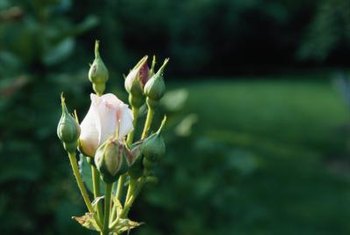
Transplanting Rose Bushes
The fact that they are tall plants is the reason you should spray them. This is a myth that roses can't be sprayed at all. If there is time for the leaves to dry off then spraying a rose is ideal as the leaves can take up the water when the roots are in stress. Many people spray their roses to wash off the BS spores. Plants with tall spires complement the wide, cup-shaped flowers of roses, while perennials and shrubs with pale green, silver, or purple leaves accentuate the sumptuous rose blossoms. Companion planting can also extend the flowering season by providing color between the main flushes of rose bloom in early summer and fall.
Roses have a reputation for being difficult to care for, but actually learning how to take care of roses is somewhat simple. The main components involved with caring for roses that you need to understand are: planting, watering, fertilizing, pruning, and winterizing. Simply put, with the correct amount of water and sunlight and a little bit of grooming, your roses should thrive. And remember, roses are resilient plants. So, if you occasionally forget or muff something, the plants are surprisingly forgiving.
Follow these basic rose care & maintenance steps:

Watering your roses regularly. The rule of thumb for watering roses is to make sure roses get about 2 inches a week. Deep soakings are much better than frequent, shallow watering. Set the hose at the foot of the rose and let water trickle in. Or if you have a big bed of roses or roses and companions, use a soaker hose or install an in-ground system.
Feed roses consistently before and throughout the blooming cycle and use fertilizer to support healthy growth.Use an all-purpose garden fertilizer, because it has balanced amounts of N (nitrogen), P (phosphorus), and K (potassium). Fertilizers touted especially for roses — such as Rose Food — are fine but not mandatory. In spring, as the plant emerges from dormancy, you can water with a tablespoon of Epsom salt (magnesium sulfate) dissolved in a gallon of water to promote strong canes.
Always water before applying fertilizer so the plant is plumped up and under no stress.
Groom your roses to improve flowering and keep plants healthy: Using sharp clippers, you can spruce up your rosebushes whenever something unattractive about the plant catches your critical eye.
Bacon escape apk. Here’s stuff you can cut out any time you see it:
Dead wood: Remove dead canes down to the ground level.
Original content is copyright OverClocked ReMix, LLC. Nes remix 2 song. For information on RSS andJavaScript news feeds, linking to us, etc. Please refer to. (Submission Agreement and Terms of Use)Page generated Sun, 19 Apr 2020 21:53:12 +0000 in 0.6598 secondsAll compositions, arrangements, images, and trademarks are copyright theirrespective owners. Please refer to the section of the siteand the available there for information about thesite's history, features, and policies.
Damaged wood: Cut it back into about 1 inch of healthy wood.
Misplaced stems: Take off stems that are rubbing together (choose one and spare the other), stems that are taking off in the wrong direction, and stems that are trailing on the ground.
Suckers: In a grafted plant, these errant canes emerge from below the graft union (the bulge at the base of the bush). The suckers look different from the rest of the bush — they’re often smoother, straighter, and lighter in color. Another clue: They sprout leaves and occasionally mongrel flowers that look nothing like the main bush.
Deadhead and tidy up your roses for a cleaner, more bountiful rose bed.The plant looks better when you get rid of spent flowers. Also, because the goal of all flowering plants is to stop flowering and produce seed (in the case of rosebushes, to make rose hips), deadheading thwarts the process. So, the plant is fooled into making more flowers. Deadhead away!
Whenever you see badly damaged, diseased, or dead leaves, remove them. To be on the safe side, throw them in the trash rather than in the compost pile. Otherwise, the leaves may spread disease.
Prune roses in the spring to destroy all old or diseased plant material.Early spring is the best time to prune. If it’s still winter, your overeager cuts may lead to frost damage. Pruning roses is a straightforward process: Remove all non-negotiable growth, thin the plants, and then shape them.
Experts advise cutting 1/4 inch above a bud eye so the bud eye doesn’t dry out.